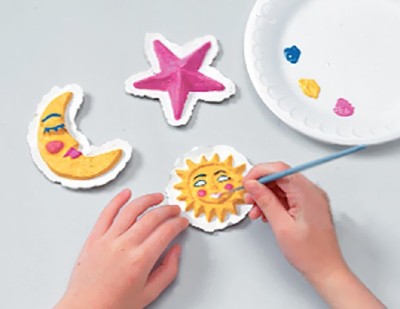There are so many different ink options you can use for paper crafts it’s no wonder people get overwhelmed! If you’re feeling a little swamped by all the different types of inks, firstly remember that you are not an expert, you will probably never really know all about every single type and the associated usage factors that come with it. This is part of the fun. Crafting means continually learning so don’t beat yourself up for not knowing all there is to know. What you can do, though, is as much research as you can so that you have a rough idea of the different inks and how they might be useful to your project. Here is a rough guide of the different inks to help you get started:
Dye
Dye ink is water based and comes in many different colours. It is easily absorbed and dries at speed. As the colours aren’t blocked, they can be layered to create different looks, and the dye can create a watercolour effect as well. A lot of dye inks work with markers and don’t stain, but you should check the packaging as some will not be suitable. It is also worth remembering that dye inks aren’t particularly fade resistant.

Pigment Ink
Pigment ink is very thick and does not soak into the paper which means it is easy to blend, but takes a long time to dry. It is good for stamping and is extremely fade-resistant as well. Just be aware it does not set on glossy surfaces so don’t use it with your card making supplies if the paper isn’t matte.
Solvent Ink
Solvent ink is strong and bold in its appearance and dries really quickly. It can be used on a wide variety of materials and works well with designs that involve stamping.
Embossing Ink
Embossing ink is really thick and dries really, really slowly but is perfect for heat embossing.
Distress Ink
Particularly popular at the moment because of the upcycling trend, and the general trend for shabby chic, distress ink is water based and makes paper and even photos look distressed. They dry slowly but blend exceptionally well and can be used in a wide variety of different ways.
Chalk Ink
Chalk Ink is basically chalk pastels, but in ink form. Its dry, matte finish looks really interesting when dry and provides a very modern and subtle look.
Hybrid Ink
Hybrid Ink is an excellent product because it has the qualities of pigment ink and dye ink. The ink also dries really quickly so is great for quick projects. The only think the inks don’t work well with is heat embossing.
Which Ink Should I Use?
Remember, although it may seem overwhelming when you have no idea what inks to use and how to use them, you will start to build some knowledge. To figure out which ink is relevant for your project consider the following:
What Is The Project?
It seems simple, but sometimes people have a vague idea of what they want to create which can cause problems down the line, especially if they are short on time and are unable to try different creative processes. Figure out what you would love your end result to be and take it from there.
Who Could Give Me Advise?
When you have decided on your project, an easy way to know which ink you need is to see the recommendations from the craft shop, from the person who made the tutorial or video, or from the person who wrote the book you have read. Alternatively, why not ask on a forum or email a craft blog or website? The information is out there!
Is There Somewhere I Can Try Different Inks Out?
Visit a craft fair or local paper crafts group to see if you can have a go with different inks. You might take to a certain ink more than the others and feel you want to work with it after having a play with it.
Does It Matter That Much If You Go Wrong?
The answer to this isn’t actually a straight-up no….
If you have materials at home and want to try different techniques, it doesn’t matter if you go wrong and the ink runs or doesn’t look good – it won’t affect anything. However, inks can be expensive, so if you invest in a set and then find it isn’t right for your project, or any project you want to do, that is money wasted. So really, unless someone has given you the kit for free or you have money to burn, you should be doing your research so you can make an informed choice when it comes to buying ink.
